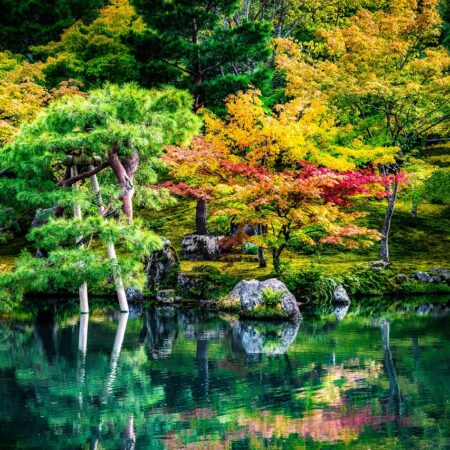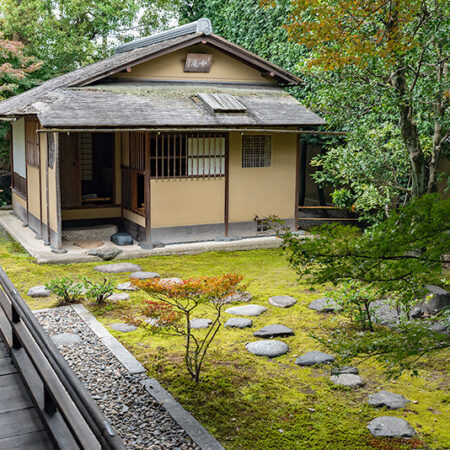Karesansui, known as dry landscape gardens, captivate people worldwide with their artistic design, drawing tourists not only from Japan but from all around the globe. This post will delve into the allure of Karesansui that mesmerizes people everywhere.
What is Karesansui?

Karesansui is a form of Japanese garden that uses white sand, rocks, plants, and terrain to depict the flow of water, without containing any actual water. It is one of the oldest types of Japanese garden design, originally representing Zen Buddhism, Wabi-Sabi (the acceptance of transience and imperfection), and a connection between the afterlife and the temporal world. The use of white sand to symbolize water flow reflects the Zen and Wabi-Sabi spirit of simplicity and tranquility. Rocks in these gardens serve to bridge the afterlife and the present world.
Famous gardens like Saihō-ji (Moss Temple) and Ryōan-ji feature Karesansui designs and are backed by mountains with ancient burial mounds, incorporating tombstone rocks into their compositions. It was believed that contemplating in these gardens could lead to enlightenment or a state akin to paradise.
The History of Karesansui
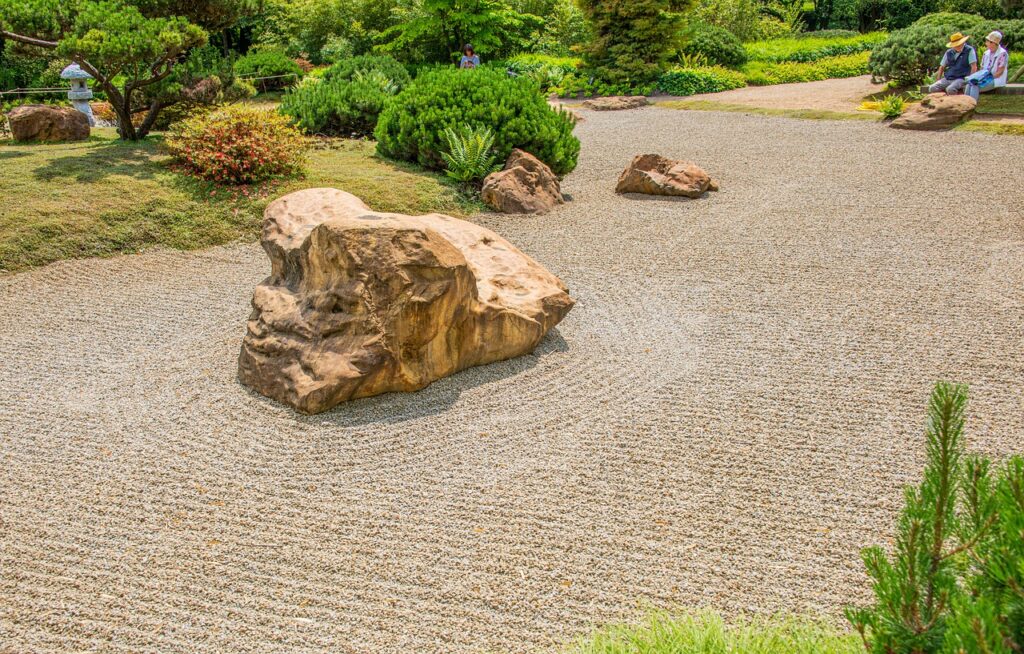
The roots of Karesansui trace back to ancient megalithic religions. The introduction of Zen Buddhism to Japan during the Kamakura period led to the construction of rock arrangements in Zen temple gardens. This evolved in the Muromachi period, where the spirit of Wabi-Sabi was integrated, completing its form.
Karesansui's history begins with Japan's ancient rock worship, where natural rocks were revered for their spiritual value, a practice evident in ancient burial mounds. However, it wasn't feasible to place such large rocks in gardens, which led to the use of smaller stones.
The style began to take shape during the Kamakura period (12th-14th century) with the introduction of Zen Buddhism to Japan. Zen gardens, ideal for meditation and Zen practices, gained popularity in this era, though Karesansui was typically a part of the garden rather than the whole.
The Muromachi period saw the spread of full Karesansui gardens across Japan, especially post the Ōnin War, which left Kyoto in ruins. People sought to rebuild beautiful gardens without extensive labor or cost, leading to the popularity of Karesansui, which could be created without water, using white sand to represent the flow.
Famous Karesansui Gardens
Let's explore some renowned Karesansui gardens:
The Stone Garden of Ryōan-ji
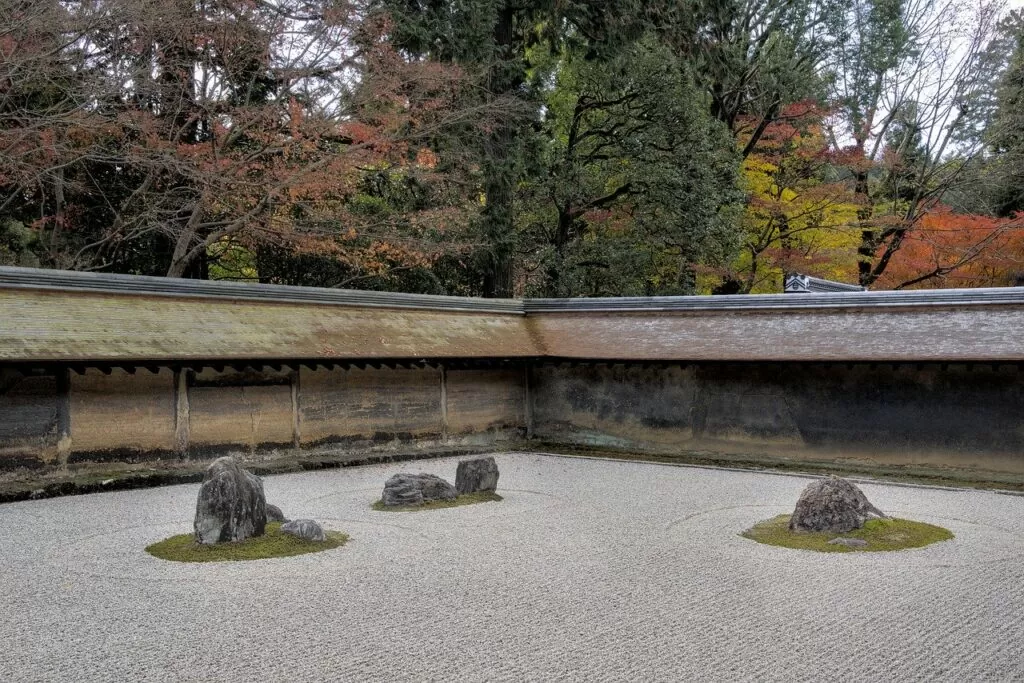
Located in Kyoto, the stone garden of Ryōan-ji is one of the most famous Karesansui gardens worldwide. Created in the 15th century, it features 15 stones arranged to represent five groups of islands, with not all stones visible from any one angle. This garden symbolizes the infinite universe and the continuity of life.
The Hojo Garden of Daitoku-ji

Also in Kyoto, the Hojo Garden of Daitoku-ji is renowned for its Karesansui designs. With numerous sub-gardens, each presents a unique theme and aesthetic, particularly the national treasure, the south garden of Hojo, known as "Ryōgin-tei," celebrated for its refined beauty.
Karesansui embodies the spiritual and artistic aspects of Japanese culture, its serene beauty continuing to inspire many.
(Image Source: おにわさん)
How Karesansui is Made
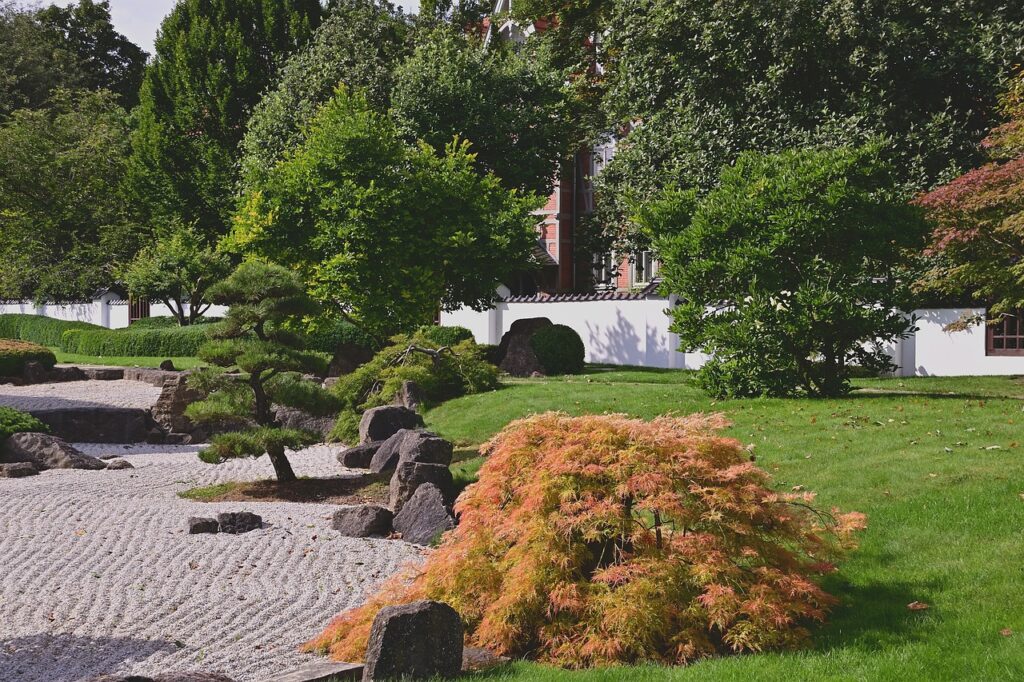
Key elements of Karesansui include:
- Rocks: The most crucial element, symbolizing mountains, islands, and waterfalls, representing various natural landscapes through different shapes, sizes, colors, and textures.
- Sand/Gravel: Symbolizes water flow or waves, with raked sand creating patterns that mimic these movements, evoking the presence of water without its physical existence.
- Moss: Adds depth and diversity, symbolizing nature's beauty and tranquility, representing moisture and quiet.
Karesansui Board Game?
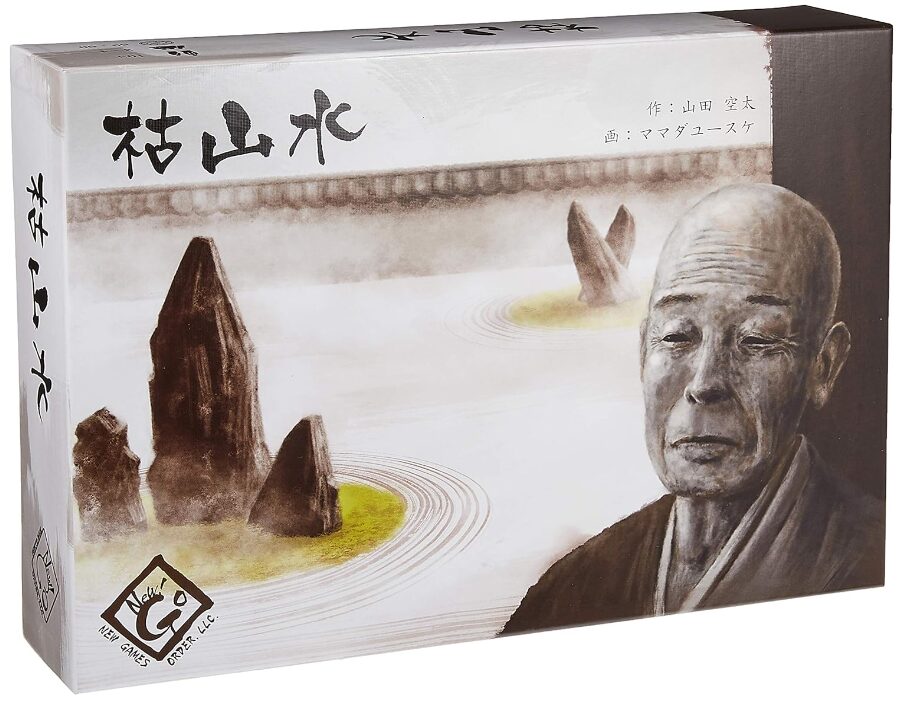
Interestingly, there exists a board game based on Karesansui, where players, as Zen monks, aim to create the most aesthetically pleasing and spiritually profound garden, with the game's scoring system emphasizing artistic merit.
For those intrigued, this game offers a blend of strategy, beauty, and competition. Consider giving it a try.
Available on Amazon.
Summary
We hope you found this exploration of Karesansui enlightening. From its historical roots and famous gardens to its representation in board games, Karesansui showcases the spiritual and aesthetic depth of Japanese gardens. Having learned about Karesansui, we encourage you to experience these tranquil gardens in person, where history and thought converge in serene beauty.



